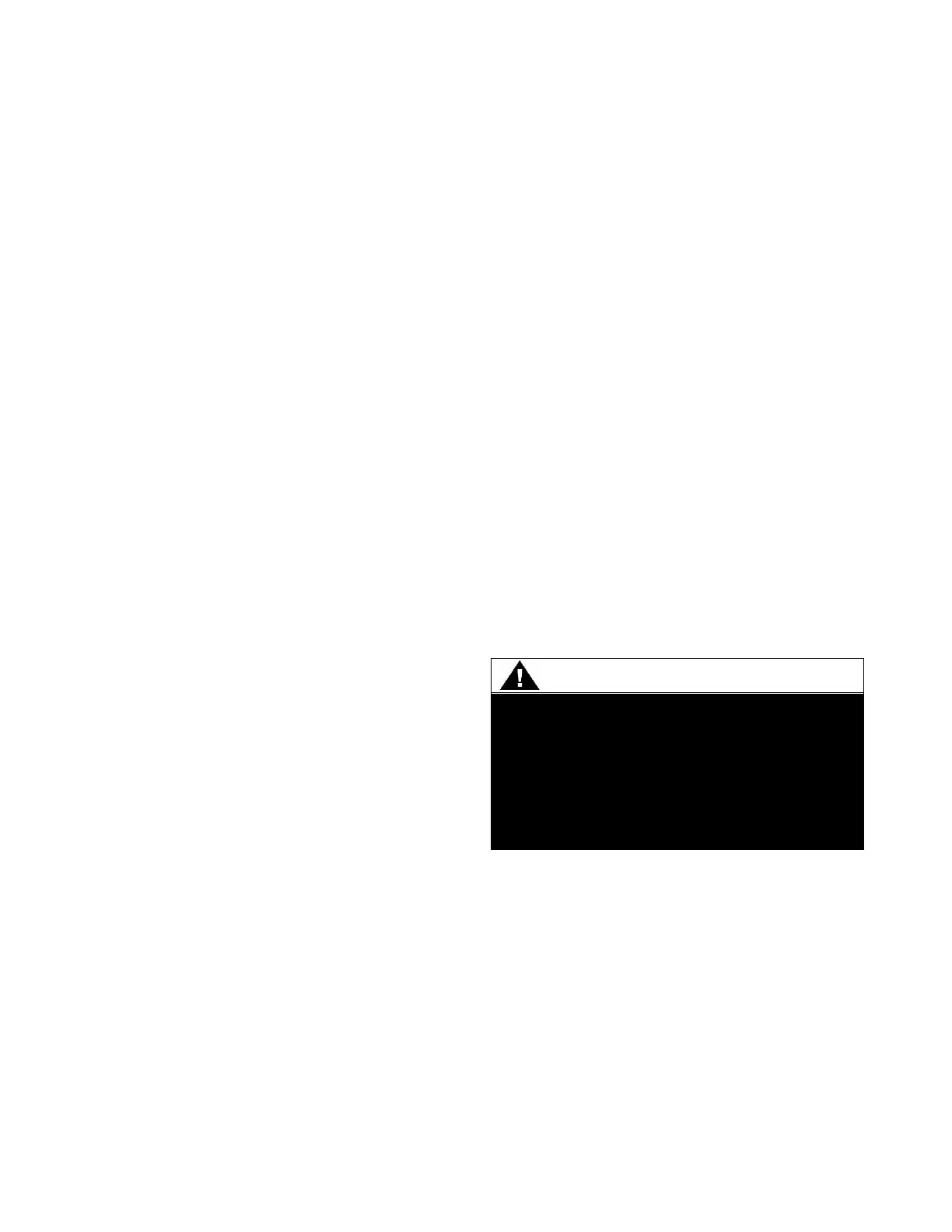Jetson
www.JetsonHVAC.com
78
refrigerant at the liquid line service valve. Do not
release refrigerant to the atmosphere.
• Inspect the entire system for unusual
conditions. Review the weekly operating log for
conditions history for the unit and take note of any
unusual trends in performance. Take appropriate
preventative actions if necessary.
Annually
Perform all weekly and monthly maintenance
procedures.
• Have a qualified service technician check
the setting and function of each control and inspect
the condition of and replace compressor and
control contacts if needed.
• If chiller is not piped to drain facilities,
make sure drain is clear to carry away system
water.
• Drain water from condenser and evaporator
and associated piping systems. Inspect all piping
components for leakage, damage, etc. Clean out
evaporator and condenser supply strainers.
• Clean and repaint any corroded surface.
Compressor Maintenance
Compressor Oil
The R-410A scroll compressor uses POE oil as
required by the manufacturer of the compressor.
Refer to compressor manufacturer for exact type
and amount of oil in the specific model in question.
Oil Level
While the compressor is running, the oil level may
be below the sight glass but still visible through the
sight glass. The oil level should NEVER be above
the sight glass!
Oil Appearance
If the oil is dark and smells burnt, it was overheated
because of compressor operation at extremely high
condensing temperatures, a compressor
mechanical failure, or occurrence of a motor
burnout. If the oil is black and contains metal
flakes, a mechanical failure has occurred. This
symptom is often accompanied by a high amperage
draw at the compressor motor.
Notes:
• If a motor burnout is suspected, use an acid
test kit to check the condition of the oil. If a burnout
has occurred, test results will indicate an acid level
exceeding 0.05 mg KOH/g.
• The use of commercially available oil
additives is not recommended. Liability for any
detrimental effects that the use of non-approved
products may have on equipment performance or
longevity must be assumed by the equipment
owner, equipment service technician, or the oil
additive manufacturer.
Scroll Compressor Functional Test
Since the scroll compressor does not use
discharge or suction valves, it is not necessary to
perform a pump- down capability test, i.e., a test
where the liquid line valve is closed and the
compressor is pumped in a vacuum to see if it will
pump-down and hold. In fact, this kind of test
may actually damage the scroll compressor.
